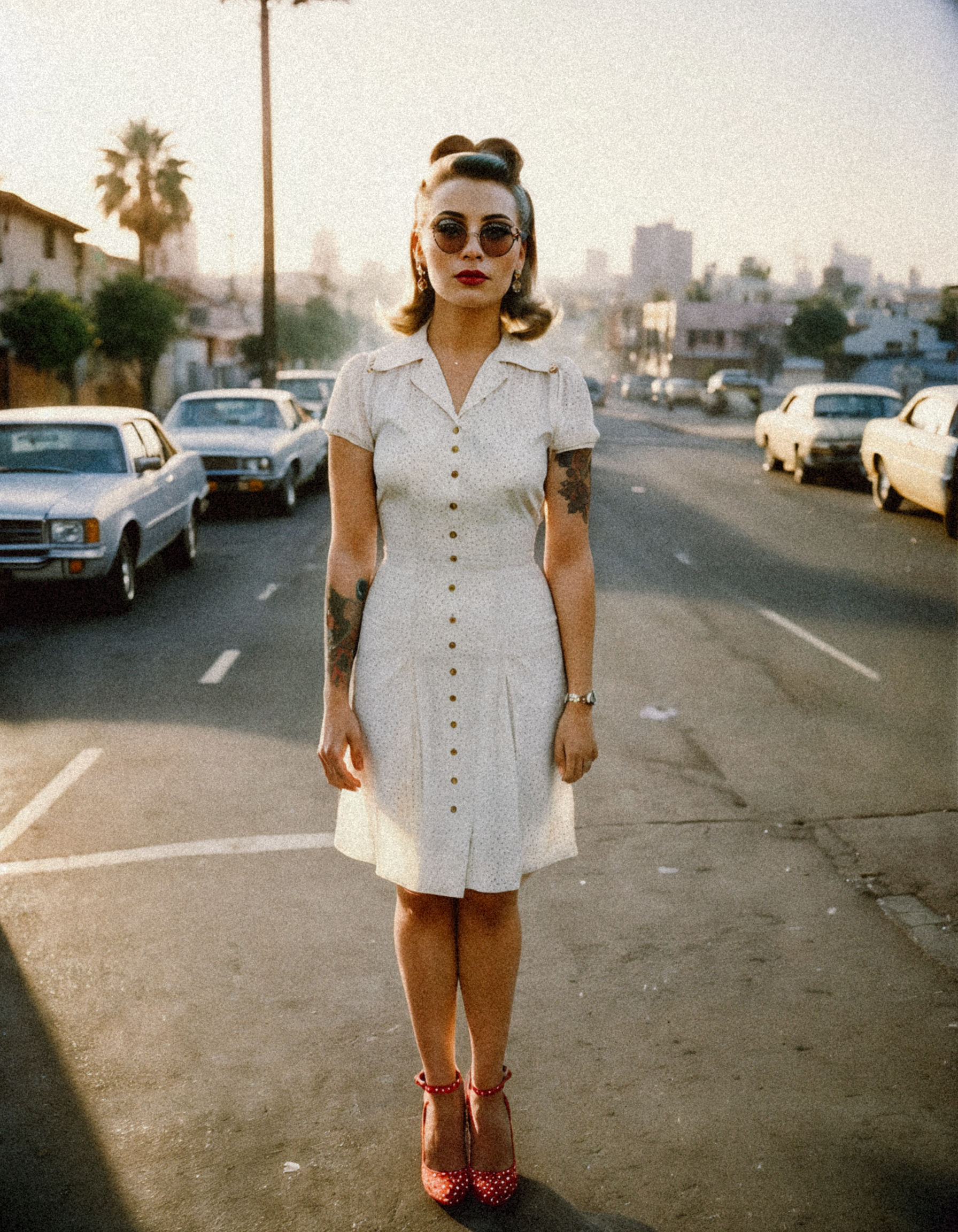
DEMYSTIFYING AI CREATIVITY
A Deep Dive into Generative Imaging
PREFACE
Demystifying AI Creativity
In 2023, I embarked on a mission to understand the potential of generative imaging models – colloquially known as "AI" – and the possible future impact on the design, advertising, and marketing industries. Initially, I explored common image generation methods. Public tools, while promising, revealed limitations:
Ubiquitous AI Style: Generated images lacked artistic diversity, consistently exhibiting a distinct "AI-ness" that felt formulaic.
Limited Control: Adjusting prompts offered little precision, hindering the ability to achieve specific art direction goals.
Privacy Concerns: Data security issues plagued both training and generation processes, posing risks for confidential information.
“Well, I guess I need to finetune my own AI models”
To overcome these limitations, I began training and finetuning my own AI models with Stable Diffusion XL (SDXL). With its open-source code and advanced capabilities, it provided the strongest starting point. By finetuning my own individual AI models for specific purposes, I gained precise control over visual style and output. Moreover, SDXL's offline capabilities ensured complete data privacy, a critical advantage for working with sensitive information.
Beyond the Debate: A Symbiotic Relationship
While the debate surrounding AI in art rages on, my research revealed a nuanced truth: AI is a powerful tool, but its true potential lies in collaboration with human expertise, deliberate guidance, and careful oversight. It's not a replacement for creativity, but rather an amplifier, amplifying our vision and pushing the boundaries of what's possible and how quickly we can get there.
From Buzzwords + Black-Boxes to the Bottom Line
My experience lies in bridging the gap between AI's potential and its practical application. By training and finetuning custom AI models tailored to specific goals, I empower organizations to harness the technology's power with rigorous control and predictable results. No more black-box algorithms – only targeted solutions that push boundaries and maximize profits, faster than ever before.
Let’s Take a Closer Look
The following proof-of-concepts showcase how custom fine-tuned diffusion models, developed during my exploration, deliver consistent, controlled visual outcomes with simple prompts. The creative possibilities are limitless when AI becomes a customizable tool, rather than a one-size-fits-all generator.
ETERNA
I trained this custom AI model to produce realistic, cinematic images with an analog motion picture film flavor. The goal was to develop a model capable of producing dark, moody, atmospheric and impactful scenes with lifelike imperfections - all things that vanilla AI models are challenged with.
Thinking about the long days and late nights working on pitch decks and video treatments, hours of searching for scrap and comping, and never being truly happy with the result; I developed this model to excel at quickly generating realistic visuals to communicate ideas, storyboards and visual direction. Speed and profit for the win!








DIFFUSION CHROME
Maybe it’s because I’ve shot film my entire life, but generative portraiture, at the moment, leaves a lot to be desired. This model was developed to emulate photographs captured with Contax and Hasselblad medium format cameras on various slide filmstock. It makes quick work of natural DoF, romantic lighting, and soft atmosphere. Subject posing and composition are precisely handled by ControlNet models.
As with Eterna, this model excels at quickly generating believable imagery to communicate ideas and art direction in decks and video treatments with near absolute control and precision.












DWELLER
I trained this custom AI on two hand-crafted datasets — quick graybox abstract models in Cinema 4D for bold structures, and textured landscapes from Gaea + C4D. A few hours of design, a few hours of training, and a merge of the two brought everything together in a model that produces a very distinct architectural style and consistent aesthetic.
The idea here is that we invest initial hours in 3D design to craft the datasets for AI training, and alleviate the hours of constant human iteration. This investment establishes precise control over a unique visual language, ready to be endlessly generated. Perfect for game studios, product designers, and marcom teams who crave precise visuals, rapid exploration, and maybe even a groundbreaking idea that wouldn’t have existed otherwise.












SURREALA
I trained this AI model to quickly generate and iterate upon minimalist surreal environmental designs, with full control over color, time of day and biome. Hyperreal 3D meets dreamlike, achieving a unique art style with endless variations.
Like Dweller, being able to establish a controlled aesthetic and art style powers limitless inspiration and iteration at hyper speed. This model further proves the power of building custom AI models for bespoke purposes — a gamechanger for concept artists, Art Directors working in gaming and entertainment, or anyone needing to bring speed and quantity to their creative process.












IKONOS
This one kinda started out just for fun. No matter what I tried, I could not generate a coherent image shot from this very specific perspective. When I started training an AI model on this idea, I actually didn’t think it would work, but it surprised me. This particular model is a LoRA (low rank adaptation) — a lightweight AI model designed to work in tandem with a primary model to define a specific “concept”. I built this one to generate nostalgic images from the surface of the ocean - ala the iconic Nikonos vintage film camera.
This exploration proves that with human guidance and a curated dataset, it is possible to train an AI model to learn even an absurdly specific concept. No idea is impossible, even for a landlocked artist in Texas who, for some reason, needs to make images halfway beneath the waves of the Pacific Ocean.












